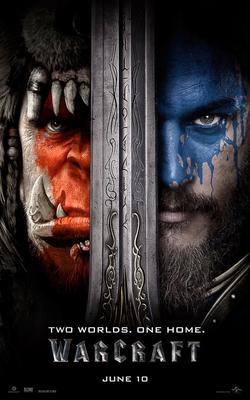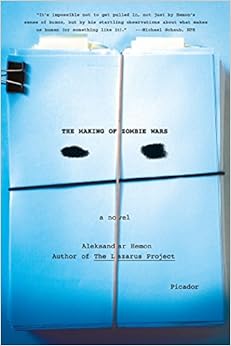This past year has been notable for its multitude of down notes, but it wasn’t all bad. Lost within the mire of scandals, celebrity deaths, and political breakdowns were the following highlights.
Food
Favorite New Restaurant in Greensboro: Taaza Bistro
This stylish Indian eatery offers an outstanding $10 lunch buffet. See the review here.
Local Eatery I Wish I Had Tried Sooner: Dame’s Chicken and Waffles
Crisp, juicy chicken + generously sized waffles + appealing sides, syrups, and schmears = satisfied customers. See the review here.
Favorite Food Finds outside the Triad: a.)The Shoppe Bar & Meatball Kitchen and b.) Luna Rotisserie (tie)
a. Customizable combinations of meatballs and sides (including a killer risotto) are offered in this cozy Carrboro space. See the review here.
b. Friendly service and a diverse round-up of flavorful South American dishes make this Durham spot a winner. See the review here.
Most Memorable Meal: Undercurrent
A night-before-wedding dinner in the company of family was bound to be memorable regardless, but Undercurrent’s culinary chops, excellent service, and attention to detail made for one hell of a meal.
Most in Need of an Overhaul: Café Pasta
The food here is solid, but the menu is limited, pricing offers no great value, and the establishment lacks an edge over competing eateries.
Movies
NOTE: Most of 2016’s prestige pictures (Silence, Fences, Nocturnal Animals, etc.) are late-year releases that won’t hit Netflix until 2017. This list reflects only those 2016 releases that I’ve had a chance to see.
Five to Watch
- Captain America: Civil War: Though not necessarily an improvement over the previous entry in the series, this film deftly integrates compelling new characters (Black Panther and Spider-Man) into a well-established world. An absolute must for Marvel fans. See the review here.
- The Nice Guys: 70s nostalgia, buddy cop hijinks, plot twists, crazy dream sequences, and more all come together in Shane Black’s highly entertaining neo-noir mashup that reluctantly pairs a heavy-handed enforcer (Russell Crowe) and a squeamish investigator (Ryan Gosling) to find a missing girl
- Midnight Special: Jeff Nichol’s heartfelt, atmospheric, low-key sci-fi drama sees a boy with special powers (Jaeden Lieberher) on the run from both the government and a religious cult with his father Roy (Michael Shannon, in a change-of-pace role) and Roy’s friend Lucas (Joel Edgerton) as protectors.
- Rogue One: A darker, more mature Star Wars film, this taut sidequel bridges the gap between the first and second trilogies as a Rebel faction of defectors, criminals, and wanderers aims to disrupt the Death Star. See the review here.
- Three-way-tie: Deadpool, Doctor Strange, and Ghostbusters. All three of these movies engendered controversies for different reasons. Deadpool, the family unfriendly R-rated superhero comedy, tosses any semblance of tact out the window, but the uneasily offended can enjoy gory visual humor as a deformed, unkillable mercenary (a perfectly cast Ryan Reynolds) seeks revenge on those who wronged him. See review here. Meanwhile, Doctor Strange, targeted by whitewashing accusations, adds Benedict Cumberbatch’s surgeon-turned-mystic into the Marvel Cinematic Universe in an origin story that isn’t afraid to get weird. See the review here. Lastly, Paul Feig’s reboot of Ghostbusters, which caught flack for going with an all-new, all-female cast more than holds its own, delivering fitfully funny dialogue and impressive visuals as a well-matched ensemble of Kristen Wiig, Melissa McCarthy, Kate McKinnon, and Leslie Jones answer the proverbial call.
Honorable Mention: Hail, Caesar! The Coen Brothers take down the studio system in this nostalgia-laden dramedy that sees fixer Eddie Mannix (Josh Brolin) attempting to put out one fire after another in hardboiled fashion. See the review here.
Three to Avoid
- Batman v. Superman: Dawn of Justice: Zak Snyder’s Man of Steel follow-up attempts to build a cohesive DC cinematic universe by putting the two title characters on a path toward collision, thanks to some behind-the-scenes manipulation courtesy of Lex Luthor. While the premise is a winning one and while Ben Affleck (as Batman) and Gal Godot (as Wonder Woman) are welcome additions here, Jesse Eisenberg is miscast as Luthor, and the plotting, pacing, and dialogue all leave a lot to be desired. See the review here.
- Batman: The Killing Joke: Batman may have been one of the previous entry’s saving graces, but this animated adaptation of Alan Moore’s classic Joker origin tale is definitely a letdown. Despite featuring familiar voice actors Kevin Conroy and Mark Hamill, the addition of a prologue to give Batgirl more screentime needlessly sexualizes her and complicates her relationship with Batman.
- Barbershop: The Next Cut: This latest entry in the Barbershop series suffers from a bloated cast and re-hashes themes (a battle of the sexes, shop owner Calvin’s dwindling enthusiasm, etc.) that were handled better in previous installments. The Next Cut certainly has its moments – and wisely retains Cedric the Entertainer’s cantankerous Eddie – but it doesn’t hold up well compared to the original.
Dishonorable mention: Suicide Squad. Yet another poorly plotted DC offering, this tale of government-sanctioned criminals and misfits on a heroic quest at least manages to be entertaining, giving us quality quips from Will Smith and Margot Robbie even if Jared Leto’s bizarre take on the Joker never quite works. See the review here.
Television
Favorite New Series: Stranger Things
An ode to the 1980s, the Duffer Brothers’ Netflix hit tells the story of a girl with telekinetic powers (Millie Bobby Brown) who appears in a small Indiana town in 1983 shortly after a boy (Noah Schnapp) goes missing. The boy’s friends, family, and the local police chief all try to piece together what happened while a shady scientist with government ties (Matthew Modine) tries to contain the situation. Featuring strong performances (from Winona Ryder as the missing child’s mother and David Harbour as the alcoholic chief), a period-appropriate look and feel, eerily suspenseful pacing, and homages to everything from Stephen King to John Carpenter to Steven Spielberg, Stranger Things offers a lot to like.
Honorable Mention: Luke Cage
Another Netflix series, Cheo Hodari Coker’s winning adaptation of a Marvel property gives us a compelling title character (ably played by Mike Colter): a wrongfully convicted prison escapee with super strength and unbreakable skin who would prefer to be left alone but finds himself drawn into heroics when his Harlem neighborhood is threatened. Timely, relevant, and paired with excellent music, the series also showcases the talents of Simone Missick (as justice-seeking detective Misty Knight), Alfre Woodard (as scheming, two-faced politician Mariah Dillard), and Erik LaRay Harvey (as wily charismatic psychopath Willis “Diamondback” Stryker). Unfortunately, it also gives us Rosario Dawson’s nurse Claire Temple performing unpleasant medical procedures and occasional bits of clichéd dialogue.
Three Others to Watch
- Better Call Saul: Vince Gilligan’s Breaking Bad prequel continues to make the most of its premise: charming con man Jimmy McGill’s (Bob Odenkirk) gradual transition to sleazy criminal super-lawyer Saul Goodman. The second season explores his complicated relationships with his resentful, more accomplished brother (Michael McKean) and his colleague/occasional girlfriend (Rhea Seehorn) in more detail while also giving fan-favorite fixer Mike (Jonathan Banks) more to do and introducing Breaking Bad baddie Hector Salamanca (Mark Margolis) to the fold.
- Bosch: Eric Overmyer’s Amazon-produced adaptation of Michael Connelly’s titular LAPD detective (brought to life by Titus Welliver) takes the police procedural formula and twists it, making the obstructive bureaucrat deputy chief (Lance Reddick) into a more sympathetic figure, setting up red herrings, and improving upon the first season’s somewhat exacting pace.
- Marvel’s Agents of SHIELD: Joss Whedon’s adaptation of Marvel’s premier spy organization has had its ups and downs, but give it credit for continuing to find new ground. The end of Season 3 (2015-2016) saw the demise of longstanding foe Hydra while newly recruited Inhumans teamed up to take down otherworldly monster Hive. The first half of Season 4 (2016-2017) introduced Ghost Rider (Gabriel Luna as the Robbie Reyes version of the character), who teamed with the agents to combat a supernatural threat. The second half then looks to show us what happens when an artificial intelligence gets too intelligent for its own good. The one constant in all of these permutations is Clark Gregg’s commendable work as erstwhile team leader Phil Coulson, the organization’s tactical brains and heart.
Honorable Mention: The Arrowverse. The CW’s four-show (Arrow, The Flash, Legends of Tomorrow, and Supergirl) DC comics collective is uneven but is a lot more entertaining than DC’s cinematic outings. After being mired in melodrama, Season 5 of Arrow has returned to the show’s gritty roots, The Flash continues to cram in new concepts (alternate timelines) while maintaining humor and character development, and the time-hopping Legends, though cheesy, at least manages to be fun.
Music
Favorite New Release: Hardwired…to Self-Destruct
Metallica’s thrash-laden throwback double-album doesn’t hit quite as hard as their 80s prime material, but the 50-something rockers play with gusto and cover a lot of lyrical ground. See the review here.
Honorable Mention: Dystopia and For All Kings
Metallica wasn’t the only Big Four thrash band to enjoy a bit of a resurgence in 2016. Megadeth’s Dystopia gains a shot in the arm courtesy of new members Chris Alder (drums) and Keiko Louriero (guitar). Dave Mustaine is in good vocal form, and while his lyrics are as paranoid and conspiratorial as ever, they seem apropos in a Wikileaks world. Meanwhile, Anthrax, sporting a new guitarist as well in Jon Donais, gets serious and eulogizes the victims of terror with tight compositions well-suited to Joey Belladonna's voice.
A Note on Books
The overwhelming majority of books that I read this year were published in prior years. I look forward to digging into 2016 releases from Stephen King and Michael Chabon when time permits.















